I’ve been running Shimano’s latest Ultegra Di2 groupset for nearly two years now and the new SRAM Force AXS for more than six months.
Given that, I know both groupsets inside and out and I’m ready to pit them against each other before declaring a winner once and for all.
Before we dive into this clash of the titans, though, let’s set the scene.
Shimano Ultegra Di2 R8100 and SRAM Force AXS are the second-tier electronic road bike groupsets from the two biggest names on the market.
Both have been updated recently and offer all the cutting-edge shifting and braking tech anyone could ever want.
Best of all, though, they’re available at slightly more reasonable prices than you’d pay for the brand’s flagship groupsets, Shimano Dura-Ace Di2 R9200 and SRAM Red eTap AXS.
However, if I could only have one on my bike, which would it be? Let’s find out.
Wireless vs semi-wireless
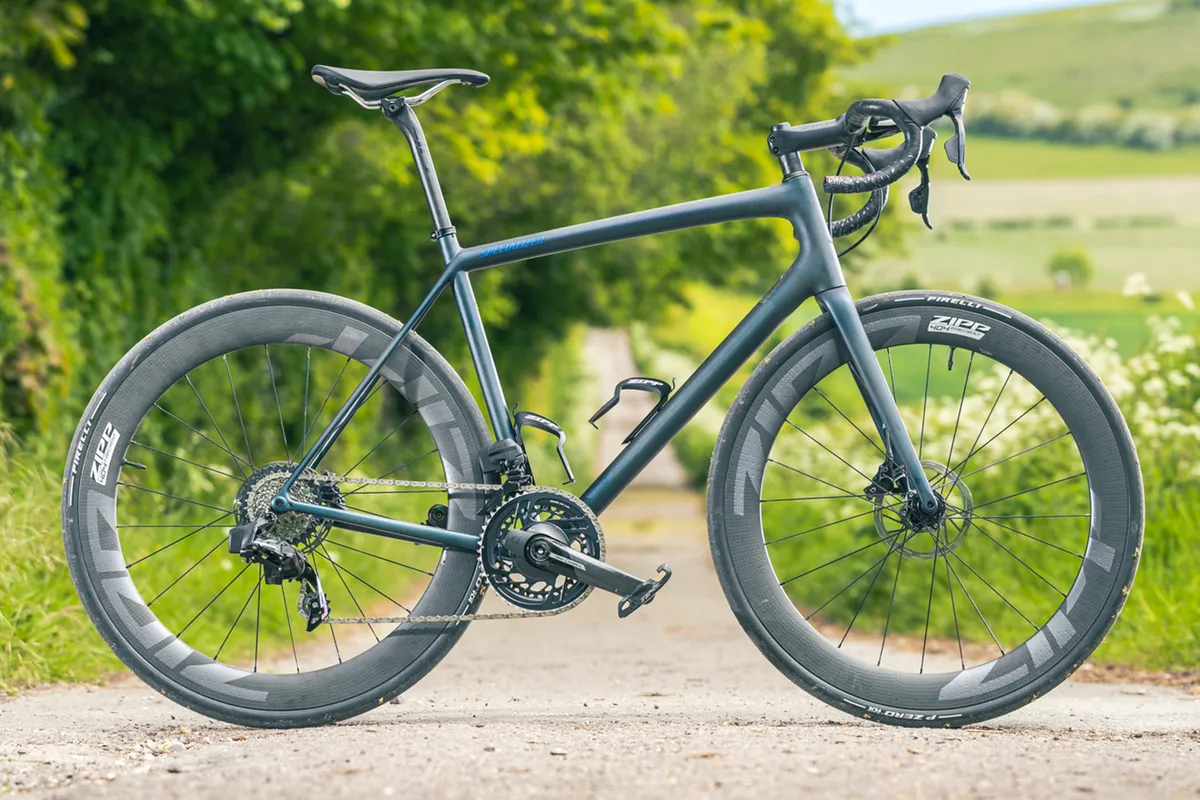
Let’s first talk about the overall design of each groupset.
SRAM’s electronic groupsets have been fully wireless from the start, which means there’s no internal cable routing to do during setup, and no tiny wires to get pinched or disconnected and cause issues.
It also means that each derailleur gets its own little battery, which clips on and off in seconds.
At the end of every ride, I can take them off and rotate on a fully charged set, and this way, I never run out of battery on my groupset mid-ride.
In contrast, with Shimano’s Di2 system, the derailleurs are still both wired to a central battery – which is typically located in the seatpost on most bikes.
The latest shifters are wireless, meaning you don’t need to route wires from the handlebars and into the frame.
This is great for tidying up the front end of your bike, but someone – whether it’s you or the mechanic building your bike – will still need to mess around with at least a couple of wires during installation.
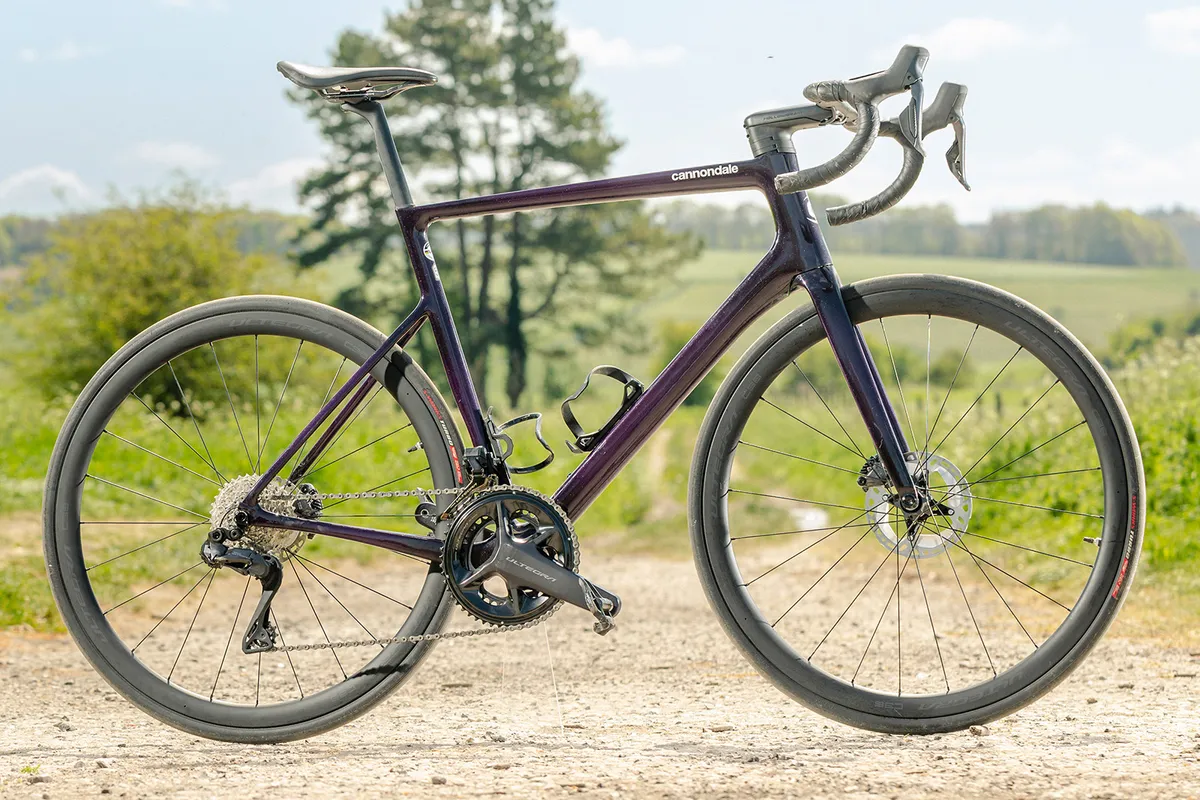
On the other hand, Shimano is able to spec just a single, larger battery as a result, and it means the individual derailleurs can be a little smaller and sleeker overall.
For me, though, this is still less convenient than the external SRAM AXS batteries.
Shimano has moved the charging point to the rear derailleur on its latest Di2 groupsets, which is supposed to make charging them easier.
This hasn’t been a game-changer, though, because the plugs in my garage are all at workbench height and the charge cable included is still only 150cm long.
As a result, I usually find myself needing to grab an extension lead or to put my bike in a workstand to get it close enough to a socket. Can we just have a longer lead, please, Shimano?
In terms of battery life, Shimano claims a Di2 system should have enough juice for about 1,000 kilometres of riding, whereas SRAM says each battery will last for around 60 hours of riding.
In practice, battery life simply isn’t an issue for either system, though.
As with anything electronic – be it a light, a bike computer or my phone – I’ll always charge my groupset before a big ride anyway, so it’s very rare I run out of battery with either.
Winner: SRAM Force AXS
Connectivity
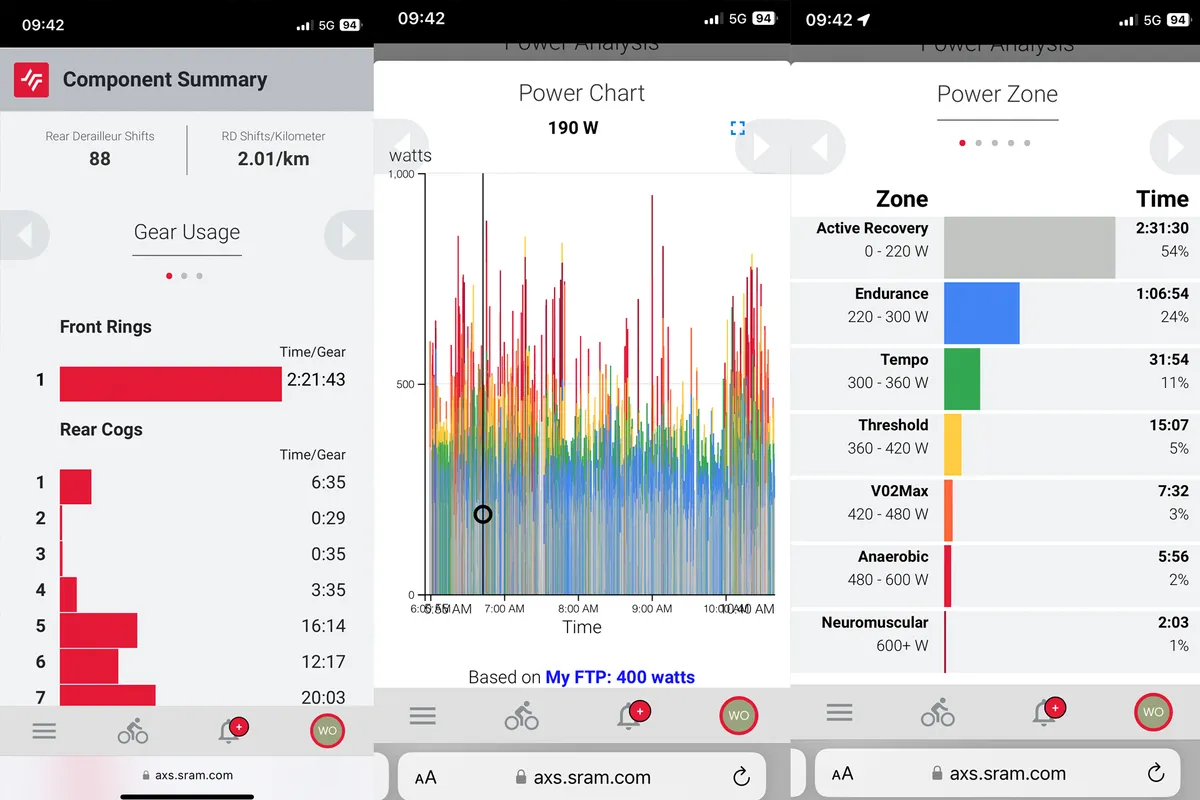
In terms of connectivity, both Ultegra Di2 R8100 and SRAM Force AXS can communicate with smart devices wirelessly via Bluetooth.
SRAM still has the upper hand here because it’s been doing this for far longer.
SRAM’s AXS app is feature-rich and can record a wealth of ride data, such as which gears you’re using, GPS data and any numbers coming from connected devices such as power meters or heart rate monitors.
In contrast, Shimano’s E-Tube app is still basically there for setup, adjusting settings and updating firmware.
It’s brilliant you no longer need any additional accessories – such as the EW-WU111 D-fly unit (which few bike brands ever specced as stock) – just to get Bluetooth connectivity with Di2 groupsets.
However, Shimano still has some catching up to do when it comes to making the most of the groupset’s wireless capabilities.
Winner: SRAM Force AXS
Shifting performance

Both Shimano and SRAM claim they’ve sped up shifting at both ends of the groupset, but given the previous-generation Ultegra Di2 R8070 and Force eTap AXS groupsets were already very quick, it’s hard to discern any dramatic improvements in truth – especially at the rear.
Regardless, though, shifting performance from both of the latest groupsets is absolutely fantastic, as you’d expect.
SRAM, in particular, made a few geometry changes to the front derailleur to improve its performance with the new Force AXS groupset, and it’s now essentially on a par with Shimano’s class-leading front shifting.
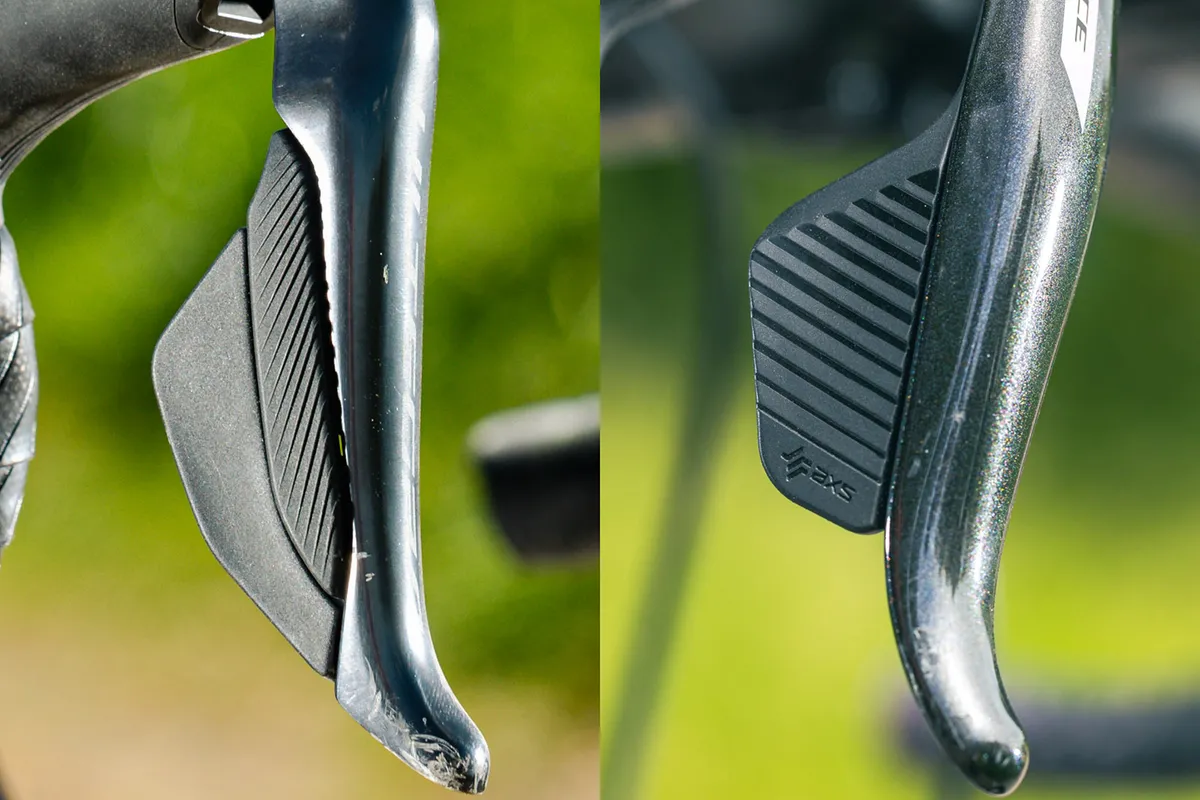
For me, the act of pressing the two shifter buttons on a SRAM AXS groupset to initiate a front shift, instead of just one on a Di2 groupset, can almost convince you the SRAM front shifting is fractionally slower, because you have to do that tiny bit more to make it happen.
In reality, though, front shifts on both groupsets are near instantaneous once the buttons have been pressed.
The main differences in terms of the drivetrain, then, come in terms of the gearing options (which we’ll come to shortly), and the fact the SRAM Force rear derailleur has a clutch and the Ultegra one doesn’t.

In practice, this means the SRAM groupset stays that little bit quieter and more composed on rough ground.
Neither are gravel bike groupsets, but with road bikes getting ever greater clearances for wider tyres, I find myself venturing off the beaten track far more often these days, and it’s here that SRAM’s Orbit fluid damper shows its worth.
It’s fair to say I didn’t experience any dropped chains or missed shifts with Ultegra Di2 during my all-road excursions, but it is noticeably noisier.
Winner: Draw
Gearing options
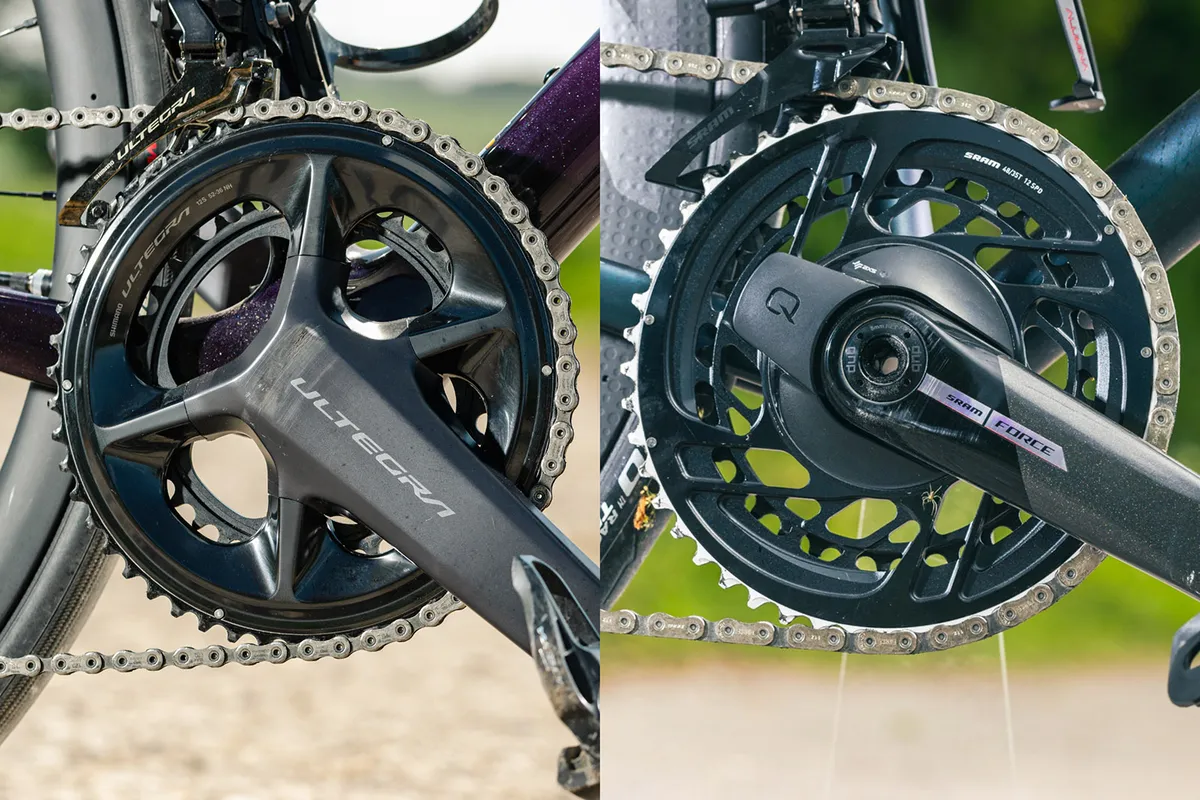
Shimano has stuck with more traditional ratios, with classic semi-compact (52/36t) and compact (50/34t) chainring options up front and an 11t smallest sprocket on the cassette at the rear.
As with 105 Di2, there’s no more ‘standard’ 53/39t option at the Ultegra level anymore. If you want those ratios, you’ll need to look at third-party chainring options, or stump up the cash for the 54/40t Dura-Ace R9200 crankset.
Shimano Ultegra R8100 cassettes max out at 34t, but there’s also a tighter 11-30t option if you prefer.
The Japanese brand has also reworked its cassette sprocket progression, making them less linear from top to bottom. This means you get more tightly spaced gears at the lower end and wider ones up top.
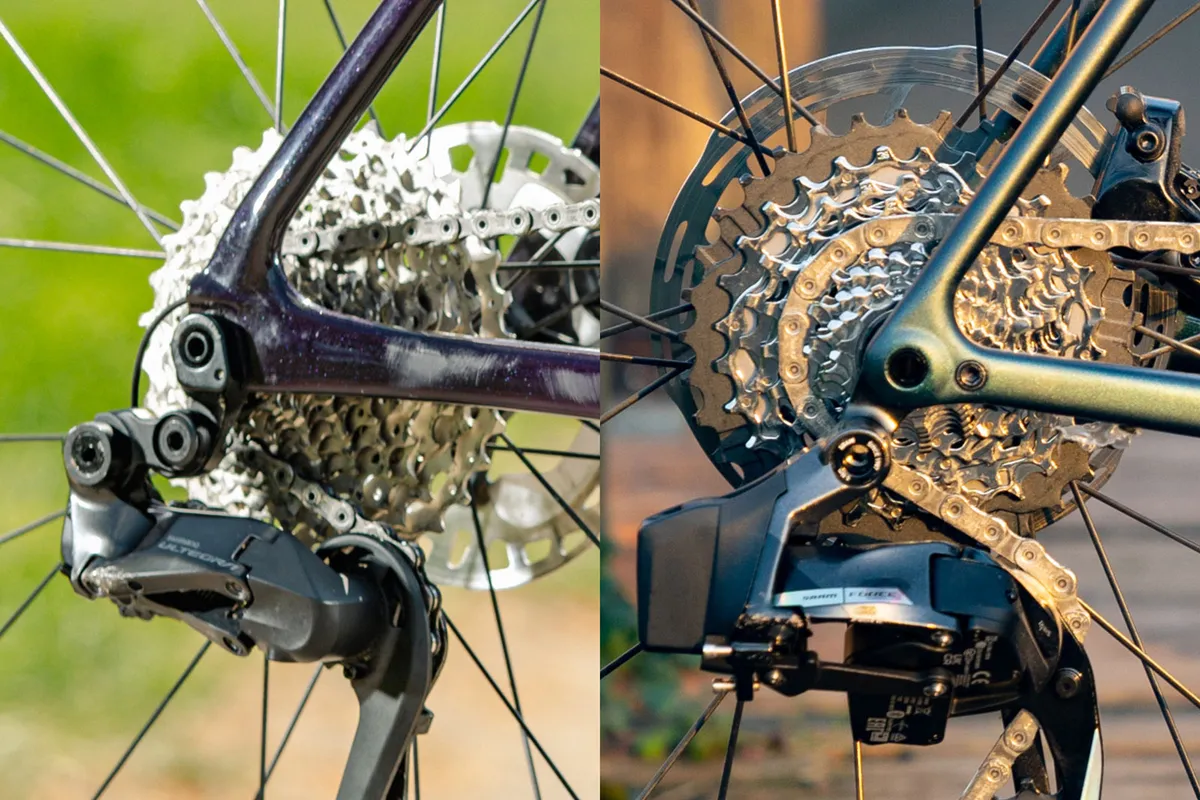
SRAM’s Force AXS cassettes (which are available in 10-28, 10-30, 10-33 and 10-36t sizes) were already on board with this non-linear gear progression, but they also use a 10t smallest sprocket to increase their overall range.
This is then paired with a set of smaller, more tightly spaced chainrings up front – with a 13-tooth jump between the rings, as opposed to 16t on Ultegra chainring sets.
Paired with SRAM’s 48/35t crankset, then, Force AXS offers a top gear ratio that’s marginally bigger than with a 52x11t. At the other end, 35x36t offers an easier gear ratio for climbing than possible with the 34x34t lowest gear offered by Ultegra (when using the 50/34t compact crankset).
Alternatively, you can have a 46/33t crankset for easier overall gearing or a 50/37t version if you need even bigger gears. You could also have a tighter cassette if you like really small jumps between the gears.
Whatever you choose, though, you essentially get the best of both worlds.
Of course, some may decry the marginal increase in drivetrain friction from using smaller cogs and chainrings, but this isn’t something I can detect while riding.
Winner: SRAM Force AXS
Braking

If there’s one area Shimano has nailed it with Ultegra Di2 R8100, it’s the braking.
The introduction of its Servo Wave – which speeds up the initial pad travel when you pull the brake lever, then increases braking power in the latter phase – combined with the new lever shape and increased pad clearance offers some of the best braking available on a road bike.
My favourite part of this package is that it makes braking from the hoods – where you naturally have less leverage (compared to on the drops) – so much better.
Given that’s where most of us have our hands for the majority of any given ride, it’s a welcome improvement.
SRAM’s latest Force AXS hydraulic disc brakes have seen fewer technological leaps forward, but they still impress overall.
As before, power and modulation are excellent, but the new calipers offer better alignment with the rotor and less chance of sticky pistons, thanks to their updated two- rather than one-piece construction.
Overall, this makes for quieter, more consistent braking than on previous Force brakes and less rotor scrape in wet, mucky conditions.
SRAM’s brakes certainly don’t fall short in terms of performance, but Shimano has moved the goalposts further here.
Winner: Shimano Ultegra Di2 R8100
Weight
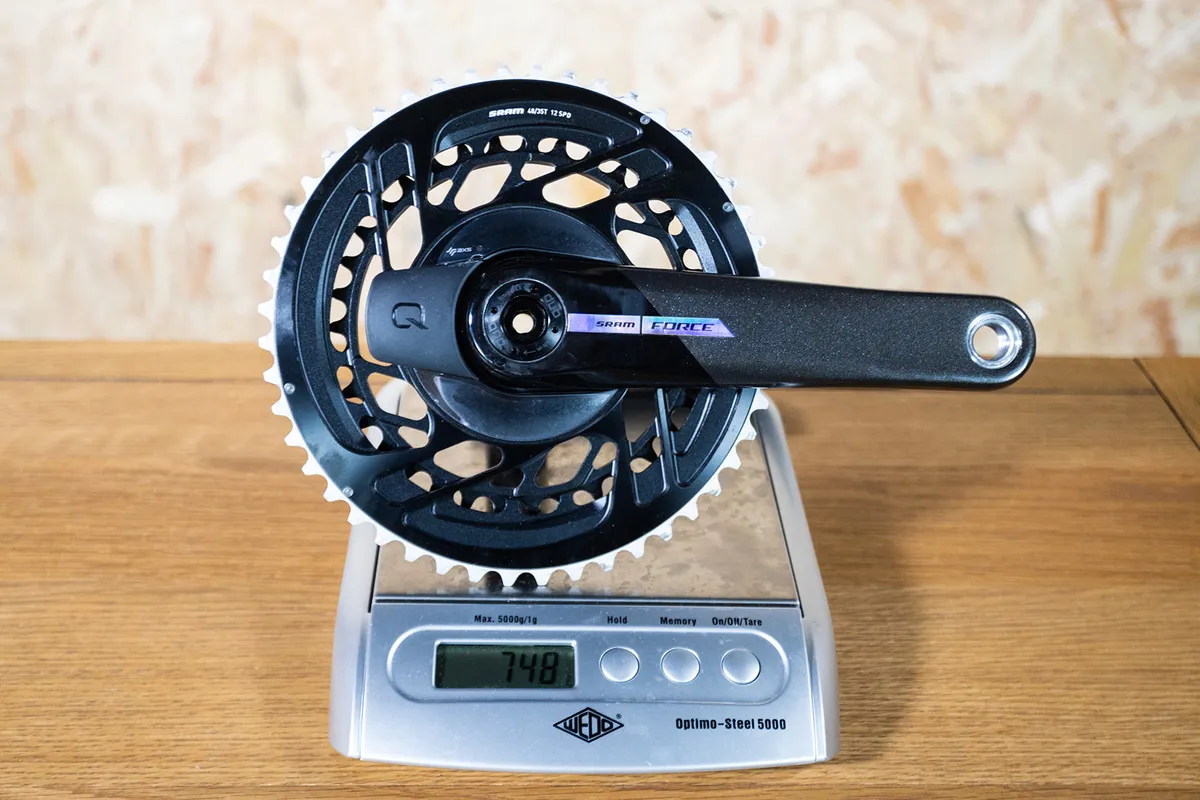
When it comes to weight, the differences naturally depend on exactly which spec you opt for.
Our Force AXS test groupset, for example, came complete with SRAM’s excellent Force AXS power meter spider, which has well-respected Quarq internals.
In contrast, our Ultegra Di2 R8100 groupset didn’t include Shimano’s updated dual-sided power meter crankset.
The quality of that power meter is still unknown at this point (we haven’t had one in to test), but it weighs a claimed 58g more than the standard version we tested.
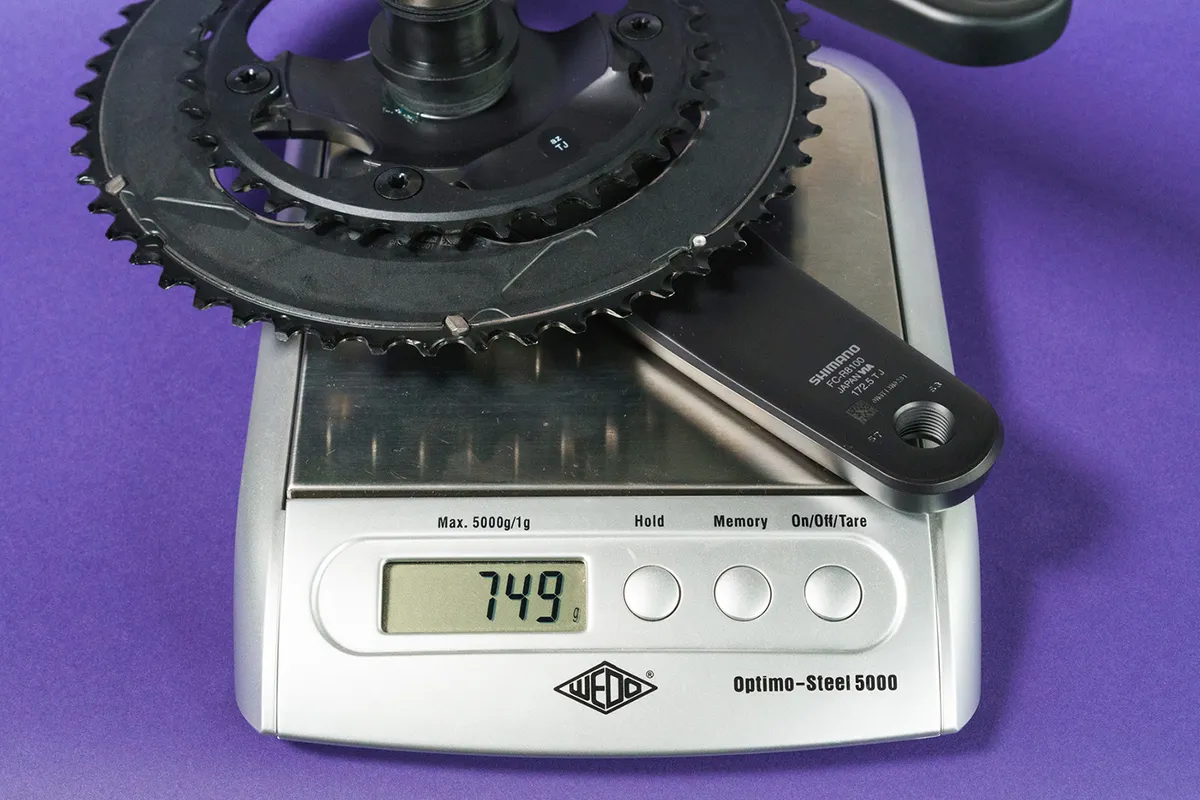
In total, though, my Ultegra Di2 R8100 groupset with 52/36t chainrings and an 11-34t cassette weighed 2,824g.
The SRAM Force AXS groupset, with 48/35t chainrings, a 10-33t cassette and the integrated power meter, meanwhile, weighs 2,922g.
Taking into account the 58g for the missing Ultegra power meter, then, the difference is a mere 40g.
Winner: Shimano Ultegra Di2 R8100, by a whisker
Price
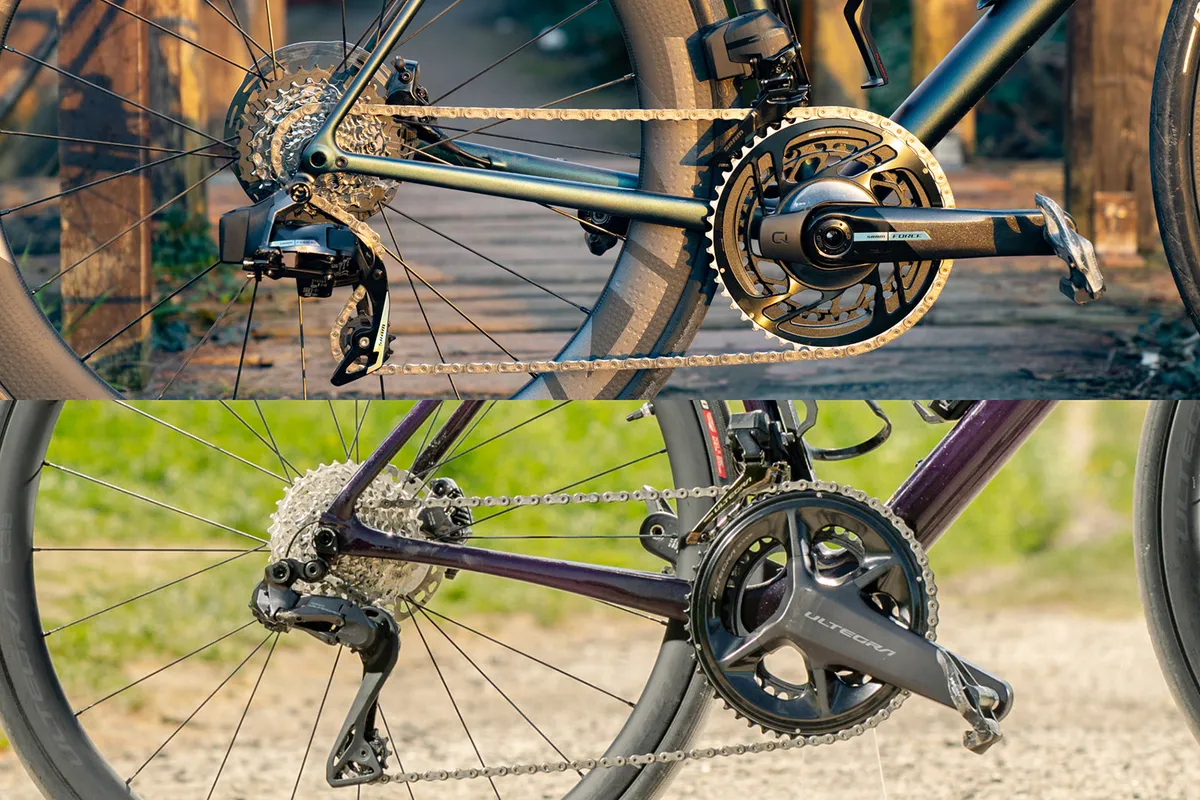
Pricing is where we see bigger differences.
At RRP, SRAM Force AXS costs £1,728 / $2,176 or £2,205 / $2,701 with the power meter crankset included.
Shimano Ultegra Di2 R8100, on the other hand, costs £2,328 / $2,400 without the power meter crankset.
Opting to include the power meter adds another £999.99 / $1,291 to the groupset price, though, bringing the total to £3,327.99 / $3,691.
On paper, then, SRAM Force AXS is the cheaper groupset by far, if you’re buying a groupset alone.
Of course, real-world prices for both groupsets at any given point in time will likely be different, though.
Things also tend to reverse when shopping for complete bikes.
Perhaps thanks to Shimano’s iron grip on the original equipment market, bikes specced with Ultegra Di2 R8100 tend to be priced the same as, if not cheaper than, ones with SRAM Force AXS.
Winner: Draw
The winner

Overall, then, it’s three points to SRAM Force AXS, two to Shimano and two categories were a draw.
So, is SRAM Force AXS the winner, then? For me, yes, though only by a very slim margin.
If I were buying a groupset to build a custom bike with, I’d opt for Force AXS. The lower price, progressive gearing options and fully wireless design all swing it for me.
Were I buying a complete bike, though, it’s entirely possible I’d end up with Ultegra Di2 and be perfectly happy with that choice.
The pricing on Shimano-equipped bikes is always incredibly competitive and there’s simply more choice – practically every brand offers Shimano builds, after all.





